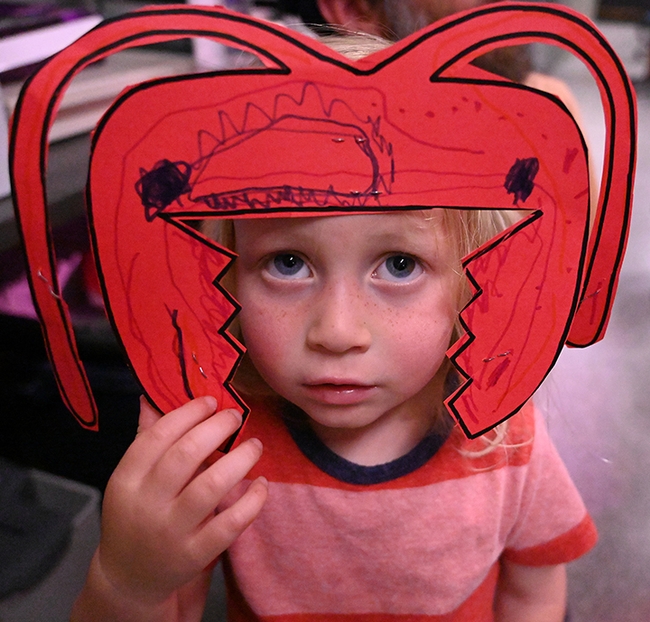
They really weren't red ants, but children wearing ant headgear, created during the family arts-and-crafts activity at the Bohart Museum of Entomology's open house on ants. The Phil Ward lab, UC Davis Department of Entomology and Nematology, organized and presented the open house.
The ant headgear was the brainchild of Tabatha Yang, education and outreach coordinator, and student intern Jakob Jess of MET Sacramento High School. He completed his two-year internship at the Bohart Museum this week, and starting this fall, will begin his studies at UC Berkeley.
"This was an art project inspired by leafcutter ants," Yang said, "and was meant to be both whimsical and colorful, thus the bright red. We had a template for folks to use, but they could also create their own from looking at the ant illustrations."
Myrmecologist Eli Sarnat, who received his doctorate at UC Davis, studying with Professor Ward, brought his sons, Benjamin, 7 and Evan, 3 to the event. They delighted in creating the ant headgear and checking out the ant displays.
UC Davis senior entomology major Morgan Myhre helped her children, Galileo, 5, and Esmeralda, 2, with their creations.
First-year entomology major Kat Taylor staffed the arts-and-crafts table, assisting the youngsters with their ideas. She also stapled the finished projects.
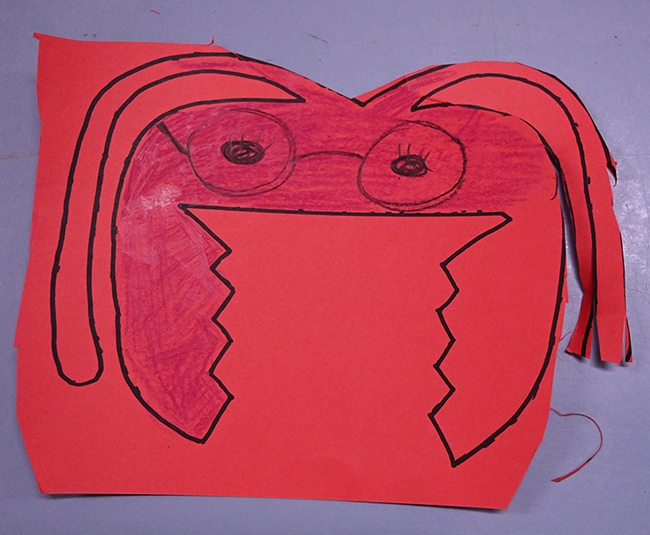
"The questions were mostly about the habits and behavior of ants, how many species are there, etc.," Ward related. "And how can I obtain live colonies for my kid? I received almost no queries about 'how do I get rid of them in my kitchen?' and that was refreshing."
"We had live colonies of a centipede-hunting ant (Stigmatomma oregonense) and a generalist omnivore (Aphaenogaster occidentalis)," Ward said. "The displays also included collections of common California ants; the world's smallest ant (Carebara) and the world's largest ant (Myrmecia)."
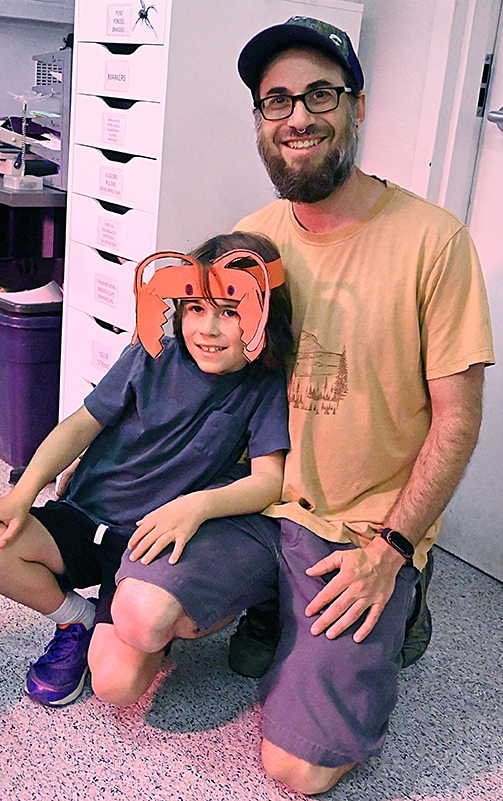
Oberski, who received her bachelor's degree in biology and a bachelor's degree in German studies (summa cum laude) in 2016 from Macalester College, Saint Paul, Minn., finished her dissertation earlier this month. She will present her exit seminar on "Phylogenetics and Biography of Pyramid Ants" at 4:10 p.m., Wednesday, June 7 in 122 Briggs Hall. It also will be on Zoom.
Oberski fielded such questions as "What do ants eat?" and "Are ants specialized or generalized in their feeding habits?" The answer can vary a lot, Oberski told them. "Some ants are generalists that eat any food they come across, but others are extremely specific, like ants that are fungus farmers or specialized predators of springtails, spider eggs, or centipedes."
Professor Ward and ants are showcased in a Bohart Museum of Entomology video on YouTube, https://youtu.be/d8eRNsD8dxo. Ants, he related, originated about 120 million years ago (early Cretaceous), evolving from "wasp-like creatures."
Next Open House on June 3. The next open house at the Bohart Museum is themed "Insects and Forensics," and will feature forensic entomologist Robert "Bob" Kimsey of the UC Davis Department of Entomology and Nematology. Free and family friendly, the open house will take place from 1 to 4 p.m., Saturday, June 3 in Room 1124 of the Academic Surge Building, 455 Crocker Lane. The arts-and-crafts activity will be "maggot-inspired art," Yang announced.
The Bohart Museum, directed by UC Davis distinguished professor Lynn Kimsey, houses a global collection of eight million insect specimens. It also maintains a live "petting zoo," complete with Madagascar hissing cockroaches, stick insects, and tarantulas, among others; and an insect-themed gift shop, stocked with books, posters, jewelry, pens, T-shirts, hoodies, and collecting equipment.
Attached Images:
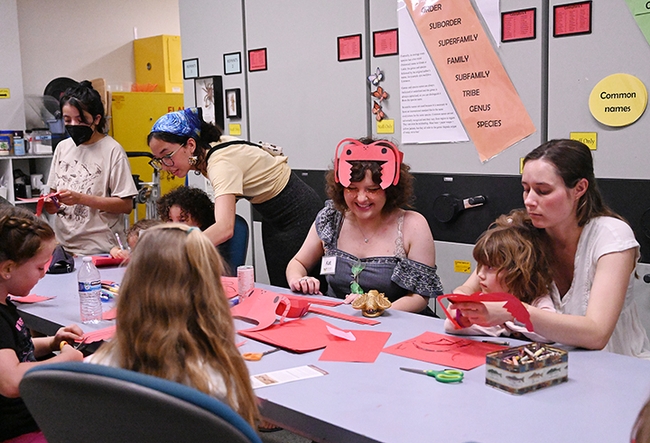
UC Davis first-year entomology student Kat Taylor (in ant headgear) staffed the arts-and-crafts table at the Bohart Museum open house. (Photo by Kathy Keatley Garvey)
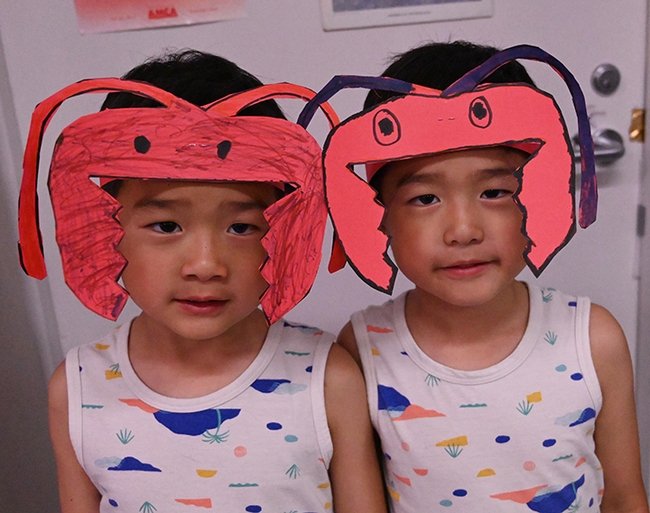
Five-year-old twins Lucas and Logan Cheuk of Woodland created these striking hats. (Photo by Kathy Keatley Garvey)
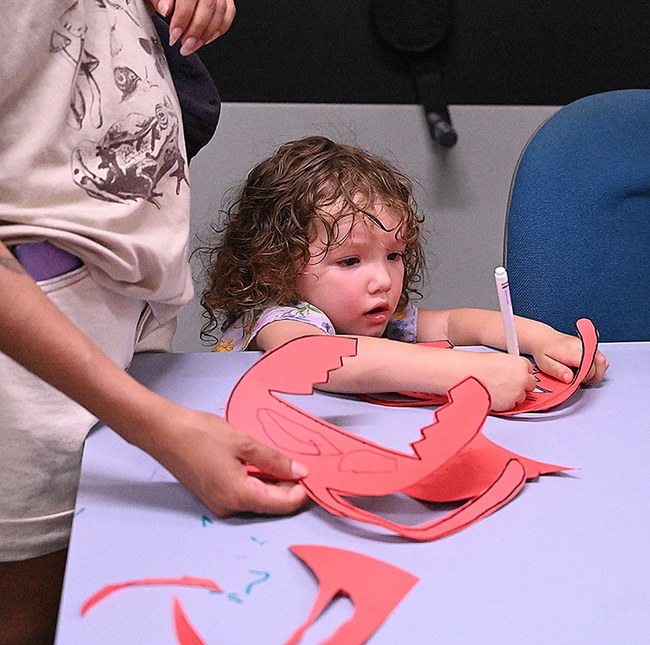
Esmeralda Myhre, 2, works on her art project. Her mother, Morgan Myhre, is a UC Davis senior majoring in entomology. (Photo by Kathy Keatley Garvey)
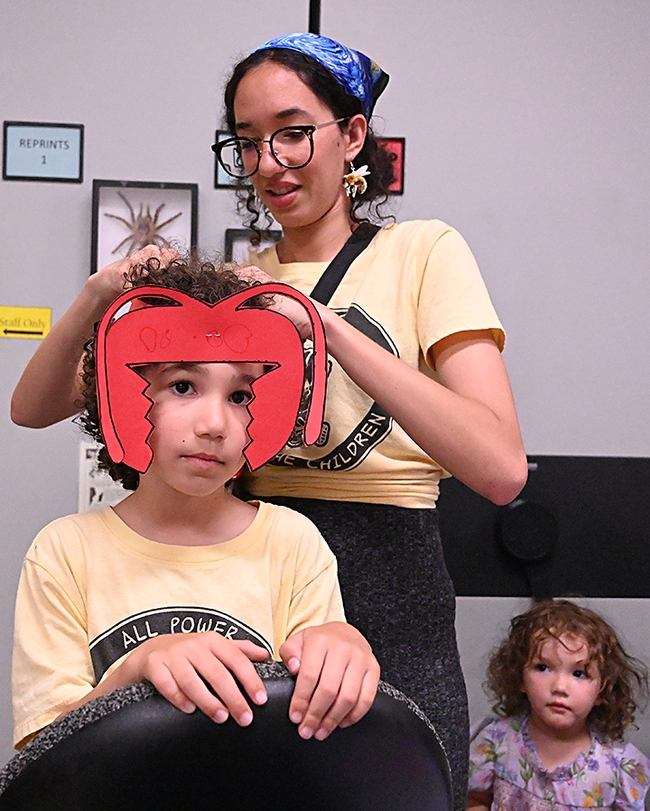
UC Davis senior entomology major Morgan Myrhe adjusts the ant headgear on her son, Galileo, 5, while her daughter, Esmeralda, 2, watches. (Photo by Kathy Keatley Garvey)
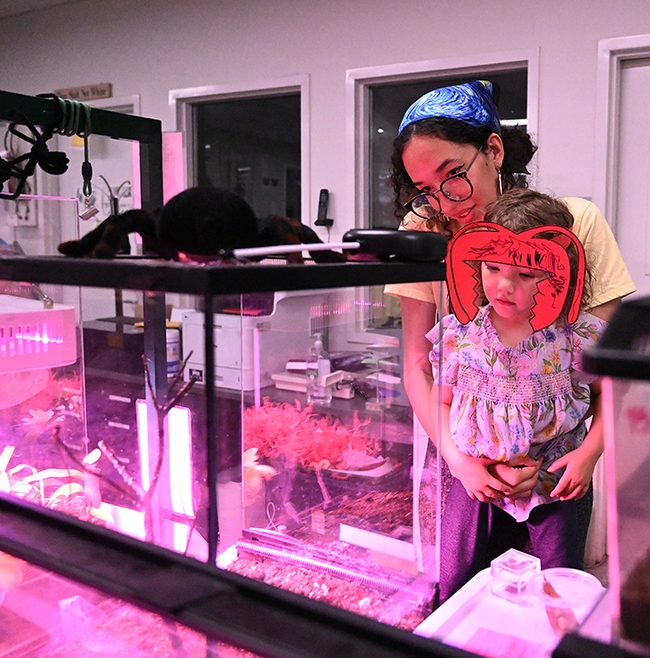
UC Davis senior entomology major Morgan Myhre shows her daughter, Esmeralda, 2, some of the Bohart Museum's insect/spider tenants. (Photo by Kathy Keatley Garvey)